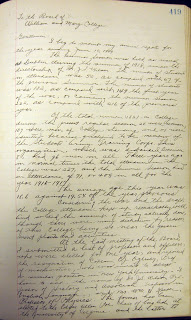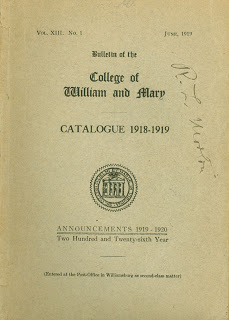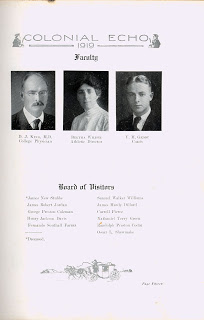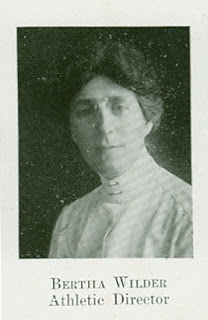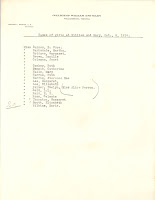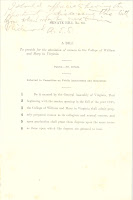In 1982, some of these early women students shared their experiences at William and Mary in surveys for graduate student Laura Parrish's thesis. One woman remembered her friends' romances, while another commented on her role as a "house president" of Tyler Hall. Most conveyed a sense of honor and pride that they had been able to attend William and Mary. One said specifically "I can truthfully say that the years that I spent at W + M (sic) were the happiest years of my life."
Although some women fondly remembered the College, those feelings were, not surprisingly, not univerisal. One woman said that "as a freshman...I was not very happy." She recalled that "Co-eds were not welcomed by the men," and nothing about the College felt welcoming.
As with any event, personal experience and memories are nuanced and rarely universal. For example, in the 1970s oral history interview of alumna Janet Coleman Kimbrough, Emily Williams, the interviewer, asked if Kimbrough felt that she and the other women "was striking a blow for women's rights in some way" when they enrolled. Kimbrough stated bluntly "no, I don't think we felt that way," even though the professors and others constantly called them "pioneers," something that Kimbrough hated. "We got very tired of that word," explains Kimbrough.
As the 1918-1919 school year closed, these women likely looked back on it with mixed feelings. Some may have felt proud and enthusiastic about the year gone by and looking forward to returning in the fall. Others may just have been glad it was over. As much as some may not have liked the moniker, these students will always be remembered as pioneers.
This post was composed by Jordan Ecker.
For additional information about the first women students at the College of William and Mary see: When Mary Entered with her Brother William: Women at the College of William and Mary, 1918-1945 by Laura F. Parrish; "The Petticoat Invasion": Women at the College of William and Mary, 1918-1945; The Martha Barksdale Papers; and the Women at the College of William and Mary page on the Special Collections Research Center Wiki.
